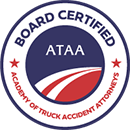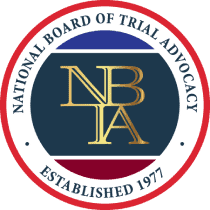Oregon Trucking Regulations
The Commerce and Compliance Division of the Oregon Department of Transportation is responsible for enforcing both state and federal truck industry regulations. By upholding uniform standards across the state, state agencies play a pivotal role in the safety and well-being of all those who travel by motor vehicle.
Specific Oregon trucking regulations cover a broad range of topics and rules, some of which Trucking Injury Law Group has highlighted below.
Investigation of Motor Carriers & the Handling of Hazardous Material for Shipment
Oregon revised statutes (ORS) 823.021 and 823.023 deal with the authority of the state’s Department of Transportation (DOT) to investigate the management of carriers and their right to entry of any premise of a motor carrier that is handling hazardous materials for shipment.
In summary, authorized representatives of “the Department of Transportation may inquire into the management of the business of all motor carriers…and shall keep informed as to the manner and method in which the business is conducted.” Such action may be taken when there is suspicion that a motor carrier is being managed in a way that threatens the safety of its employees, fleet, or those on the road.
Additionally, the DOT or authorized representatives “may enter upon any premises, or any equipment, rolling stock or facilities operated or occupied by any motor carrier…for the purpose of making any inspection, examination or test reasonably required in the administration of ORS.”
Regular inspections of motor carriers and facilities handling hazardous materials are a cornerstone of our state’s trucking regulations and are an invaluable tool for prioritizing safety over all else.
Oregon Truck Safety Corridors
The state of Oregon designates a stretch of highway, interstate, or roadway as a Safety Corridor when it has more crashes, accident injuries, or traffic fatalities than is expected. These stretches of road are typically marked by signage alerting motorists that they are entering a Safety Corridor. Whenever a driver sees one of these signs, they should exercise extra caution.
Designated Truck Safety Corridors in the state of Oregon are as follows:
- I-5 from MP 2 to MP 9 (Siskiyou Summit)
- I-5 from MP 108 to MP 117 (Weaver to Roberts Mountain)
- I-5 from MP 252 to MP 260 (Salem)
- I-5 from MP 289 to MP 300 (Tualatin to Marquam Bridge)
- I-205 from MP 8 to MP 14 (West Linn to Clackamas)
- I-84 from MP 63 to MP 73 (Hood River to Mosier)
- I-84 from MP 217 to 277 (Emigrant/Cabbage Hill in Ladd Canyon)
- I-84 from MP 331 to MP 340 (Nelson Point to Weatherby)
- US 101 from MP 233 to MP 243 (North Bend to Coos Bay)
Emigrant Hill (also known as Cabbage Hill) is especially dangerous due to its steep downgrade and the severe weather conditions that are typical of Northwest Oregon. Truck drivers are encouraged to drastically reduce their speeds when traveling downhill through this Safety Corridor. Below are the recommended speed limits for downhill travel in this area based on weight:
- 50,000–65,000 lbs. – 37 mph
- 65,000–70,000 lbs. – 26 mph
- 70,000–75,000 lbs. – 22 mph
- 75,000–80,000 lbs. – 18 mph
Whenever you see a sign indicating that you are entering a Safety Corridor, be sure to follow all rules of the road, reserve the left lane for passing only, and keep your distance from tractor-trailers and other big trucks.
Requirements To Be a Truck Driver in Oregon
A commercial driver’s license (CDL) is required to drive most of the big trucks we share the road with. CDLs may be classified as either Class A, Class B, or Class C. The different classes allow the license holder to drive different vehicles. For example, someone with a Class A CDL can drive a tractor-trailer, whereas someone with a Class B CDL can drive a school bus.
Additional endorsements are sometimes necessary for the transportation of hazardous materials or when driving overweight vehicles.
To obtain a CDL in the state of Oregon, you must meet the following requirements:
- Have previously met the minimum requirements for a non-commercial, Class C driver’s license.
- Have a minimum of one year of driving experience with a Class C driver’s license.
- Be a minimum of 18 years of age for intrastate travel or 21 for interstate.
- Complete an online application and any additional requirements for necessary endorsements.
- Pass a vision and medical screening.
- Obtain a Commercial Learner’s Permit (CLP).
- Pass the state CDL skills test and pay any necessary fees.
The process of securing a CDL isn’t supposed to be quick. We don’t want drivers with minimum experience behind the wheel of a big rig setting out on Oregon roads. As they are now, the requirements to obtain CDL certification are intended to ensure that truckers have the requisite skills, knowledge, and practical experience behind the wheel to be able to safely navigate wherever the job takes them.
Trucking Injury Law Group Understands How Oregon Trucking Regulations Work
As a multi-state law group with nationwide resources, we have made it a priority to become experts on local trucking regulations in every state we practice in. We use our deep understanding of Oregon trucking regulations to hold negligent motor carriers, truck drivers, freight companies, and others responsible for any actions or inactions that contributed to an accident.
Let us get started on your case today. For a no-cost, no-obligation meeting with a truck accident attorney, contact our Trucking Injury Law Group by phone or by filling out our convenient online form.






